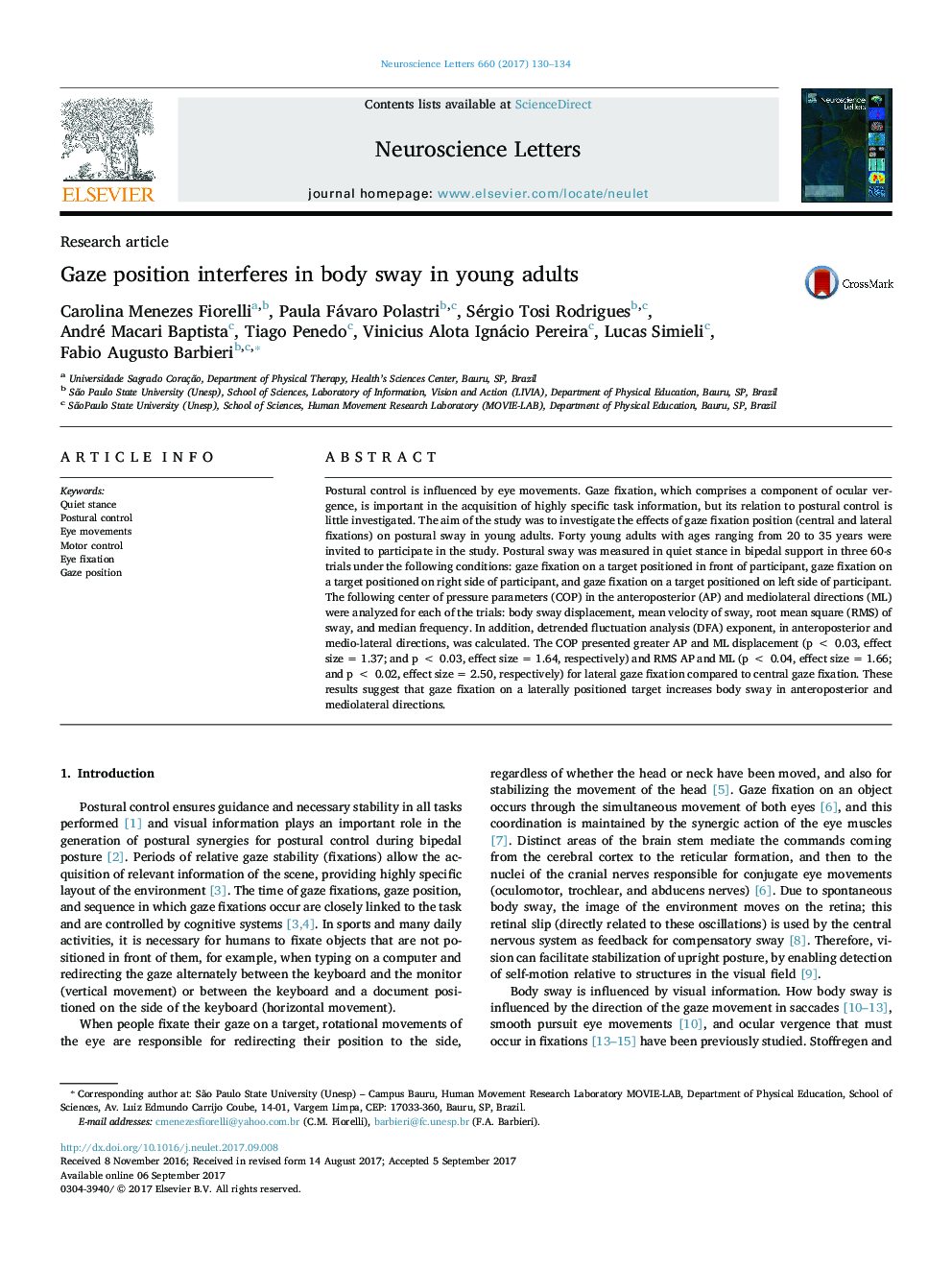| Article ID | Journal | Published Year | Pages | File Type |
|---|---|---|---|---|
| 5738541 | Neuroscience Letters | 2017 | 5 Pages |
â¢Lateral gaze fixation did not attenuate body sway.â¢Fixating the gaze on a lateral target increases AP and ML body sway compared to fixating the gaze on a central target.â¢The absence of effects on other parameters seems to indicate a functional strategy to perform the lateral fixation efficiently.â¢The influence of gaze position on postural stability should be considered when performing tasks requiring attentional focus.
Postural control is influenced by eye movements. Gaze fixation, which comprises a component of ocular vergence, is important in the acquisition of highly specific task information, but its relation to postural control is little investigated. The aim of the study was to investigate the effects of gaze fixation position (central and lateral fixations) on postural sway in young adults. Forty young adults with ages ranging from 20 to 35 years were invited to participate in the study. Postural sway was measured in quiet stance in bipedal support in three 60-s trials under the following conditions: gaze fixation on a target positioned in front of participant, gaze fixation on a target positioned on right side of participant, and gaze fixation on a target positioned on left side of participant. The following center of pressure parameters (COP) in the anteroposterior (AP) and mediolateral directions (ML) were analyzed for each of the trials: body sway displacement, mean velocity of sway, root mean square (RMS) of sway, and median frequency. In addition, detrended fluctuation analysis (DFA) exponent, in anteroposterior and medio-lateral directions, was calculated. The COP presented greater AP and ML displacement (p < 0.03, effect size = 1.37; and p < 0.03, effect size = 1.64, respectively) and RMS AP and ML (p < 0.04, effect size = 1.66; and p < 0.02, effect size = 2.50, respectively) for lateral gaze fixation compared to central gaze fixation. These results suggest that gaze fixation on a laterally positioned target increases body sway in anteroposterior and mediolateral directions.
